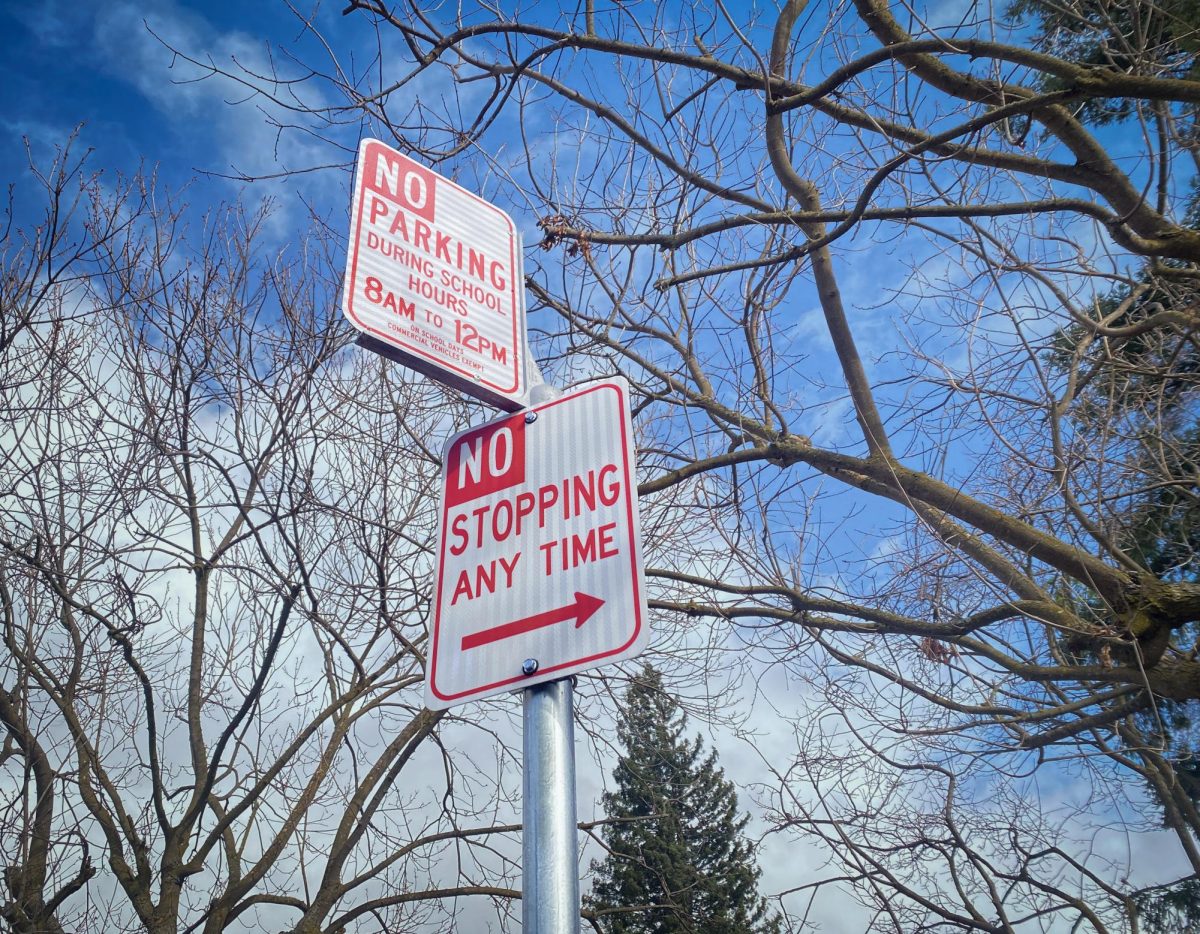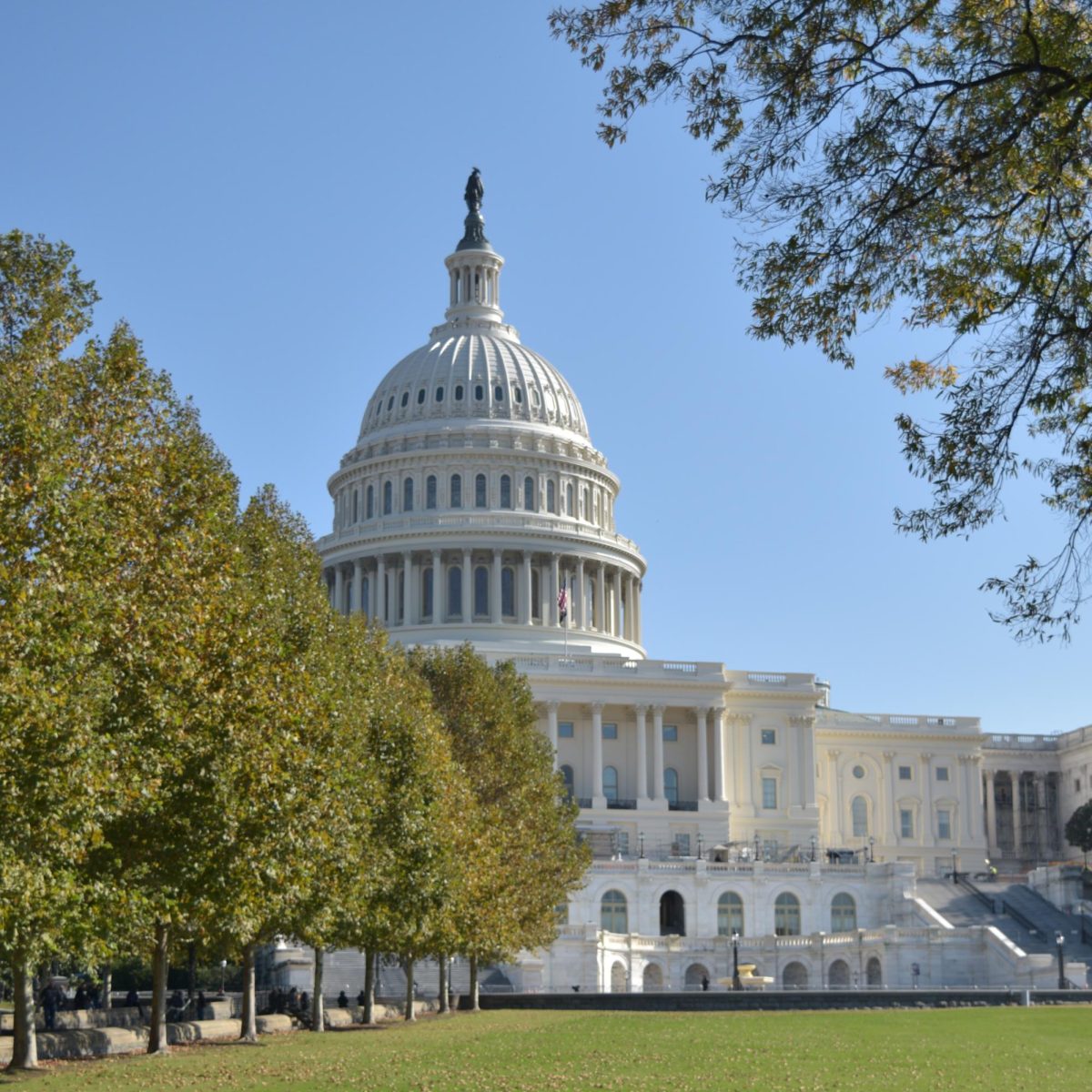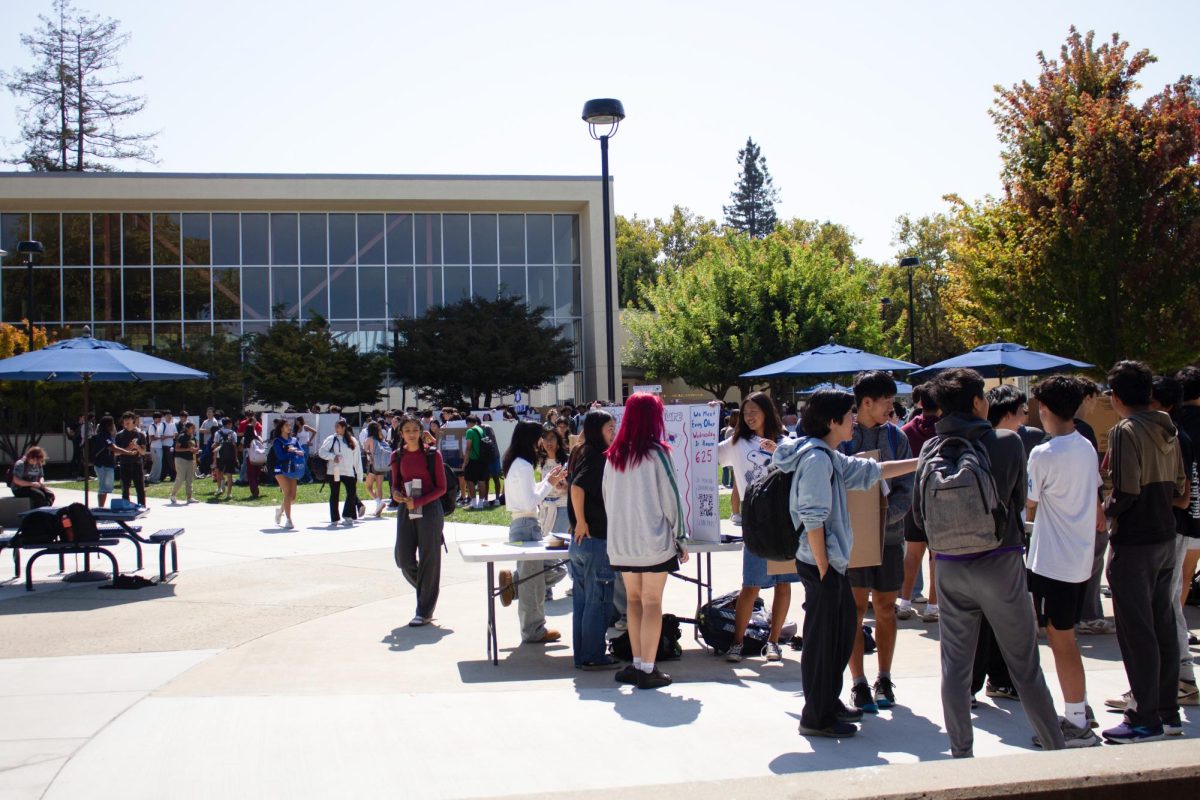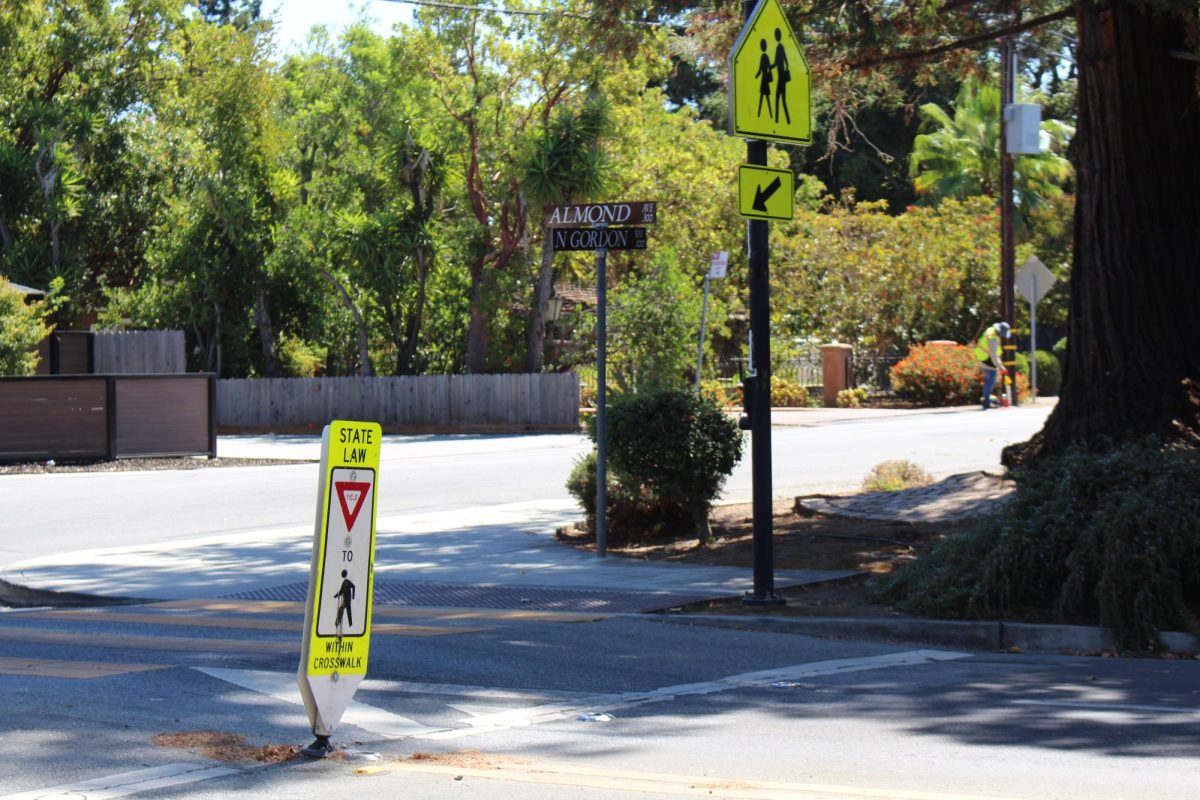In December, parking was restricted during school hours on several streets north of Los Altos High School, including Valencia Drive, Panchita Way, and Alicia Way. These restrictions, according to Los Altos City Mayor Pete Dailey, were instated in response to long-standing safety concerns — but not without controversy from stakeholders on all sides.
Rules and regulations: A long time coming
Student parking is a problem the majority of schools face — most don’t have the infrastructure to support the volume of student drivers. A 2023 UC Berkeley study analyzing parking at new high schools in California found that in suburban areas, there are an average of 1.8 students for every available parking spot.
LAHS is in a particularly tricky situation. Just 316 spots serve approximately 2,400 students and staff. Worse, the school is landlocked in the 30 acres it was built on, with surrounding residential homes on all four sides.
This isn’t a new issue — parking regulations have been on the City Council agenda for over 20 years. Public comment complaints during City Council meetings have ranged from property damage to safety concerns.
“We’ve had students park on our landscaping and in front of our mailboxes, break our fence, throw trash everywhere, loiter, and smoke,” Los Altos resident Ashwin Bravi said.
“It’s a weird feeling to have, knowing your children aren’t allowed outside your house because of high school students and parents jockeying for spots and driving too quickly,” Los Altos resident Andrew Atherton said.
Some residents, at the same council meeting, have advocated for banning parking near the school altogether, promoting walking and biking as a better alternative.
“My observations this past week have shown that students are not willing to walk very far to get to class,” Los Altos resident Peter Johnson said. “I’ve determined that the maximum tolerable walking distance of a typical high school student once parked is about a quarter of a mile.”
But homeowners haven’t been united on the issue.
“In my experience, most high schoolers in this area are respectful — they drive at the right speed, and they’re thinking about others,” Los Altos resident Joey Toney said.
Further, local realtor Elizabeth Thompson points out that many homeowners should have been aware of associated parking issues — and factored that in when purchasing property near LAHS.
“Legally, parking issues need to be disclosed when a home is sold,” Thompson said. “Homeowners bought or lived in those homes as long as there’s been a high school there, so they purchased the homes with full knowledge of it.”
LAHS Assistant Principal Derek Miyahara believes the recent push for restrictions were a combination of two main factors: Decreased on-campus parking due to construction, and residents getting a two-year break from traffic congestion during the pandemic.
“The big issue is that the school has been expanding,” Los Altos Capital Improvement Program Manager Steven Son explained. “There’s been a 30 percent increase in enrollment. Meanwhile, there’s no room to grow.”
“This has been a long-standing problem,” Miyahara said. “I’ve been around for 20 years, and the residents around the campus have never been happy about the fact that students park here.”
The current parking policy
The city mainly prioritized safety when writing the new policy.
“The point of this parking restriction was not to discourage or penalize students,” Son said. “Jardin was basically a raceway for a lot of students — nobody was really following the rules of the road. This was strictly a public safety issue.”
“Our number one job is to protect the health and safety of our residents,” Dailey said. “Number two is to promote equal opportunities. And then, somewhere down the list is convenience. I want to try and mitigate student concerns — but my first obligation is to protect the health and safety of Los Altos residents.”
“No Parking” signs were placed on streets from Panchita Way to Casita Way, restricting parking from 8 a.m. to 2 p.m. Meanwhile, white strips were painted along the road from Alicia Way to Clark Street to mark parts of the street as pick-up/drop-off only.

In a simultaneous effort to promote walking and biking, the plan added “high visibility crosswalks” for streets joining at Jardin Drive, a wider bike lane on the south side of Jardin, and a ten-inch shared lane for both pedestrians and bikers on the north.
The end goal behind the design was to break up congestion jammed on streets flowing into Jardin, distributing it more evenly across streets further out. As Dailey puts it, the spread of student cars around the neighborhood has become more “equitable.”
According to Son, the restrictions have worked as intended: making streets calmer, and increasing utilization of pedestrian walkways.
“This has really improved the safety of Jardin for both students and residents,” Son said. “You not only control the racing, but people are also crossing where you’re expecting them to cross.”
Neighbor and student reactions
Still, the policy is far from perfect.
Many are concerned about a specific caveat: that parking isn’t just restricted for students, but everyone — including residents.
“I want my 85 year old mother to be able to come over and park in front of my house without worrying about being ticketed,” Los Altos resident Lisa Collart said in an email to the Los Altos City Council.
What’s more, as foreseen by Son when designing the restrictions, students have now been parking on streets further down.
“When people further down bought their houses, they weren’t aware that the restrictions were going to be put in place,” Thompson said. “It definitely, in my opinion, hurts the people who weren’t right next to the high school.”
And despite the regulations, other residents expressed continued unhappiness, seeking further street clearance from Jardin — one cited it as the allocated parking spaces on the streets a “misappropriation of resources,” infringing on the “quality of life” of nearby residents.
But residents aren’t the only affected parties — several students have been outspoken on the ways it’s affected them too. Many have communicated that the policy doesn’t take their circumstances, like long commutes to school, jobs, and family commitments, into consideration.
“I live four and a half miles from school, so I have to drive everyday and I have to drive my sister to Gardner Bullis before,” junior Samantha Witteles said. “The regulations are arbitrary —- all the parking restrictions have just pushed people back. We’re still next to people’s houses, just different people’s houses.”
“People like me, who live by Rengstorff, weren’t really accounted for,” senior Santiago Rangel Arteaga said. “There are also people who live in Los Altos Hills — walking or biking up the hills five days a week is just unreasonable.”
Additionally, one of the greatest concerns is for students who live further away — many of whom come from low-income households, especially since Los Altos is significantly more expensive than its neighboring towns.
“I’m extremely sympathetic to them,” LAHS Principal Tracey Runeare said. “We want our students to be able to come here everyday. We want to work with students with personal circumstances.”
Senior Osvaldo “Ozzy” Valenzuela, with his friends, has taken up speaking with the City Council in order to find a solution that also incorporates the voices of students. He’s sent out emails to the student body and spoken up at council meetings in the hopes that student concerns will be heard as well.
“ One thing that many of these council members they tell me is, ‘It’s so great to hear student opinions,’” Ozzy said. “It made me realize, students coming to meetings and talking about their opinions is very uncommon.”
Ozzy and his team are currently working on bringing viable solutions to the City Council. Above all, they want to emphasize the compromise aspect of problem-solving, accounting for the interests of both stakeholders.
“I understand the points homeowners are making,” Ozzy said. “But what we need is a compromise. We want a solution that works for everyone.”
Moving forward: Tackling challenges, together
As residents and students alike face numerous challenges, it’s clear that finding the answer to the issue won’t be easy.
“It’s a little bit of an impossible situation,” Thompson said.
LAHS has been determined to be part of the solution. Working on policies like opening the turnout to ease traffic, monitoring areas with high congestion and having a school representative at the City Council meetings, the school certainly hasn’t turned a blind eye to the issue.
“Mr. Miyahara has really been trying to solve these problems,” Los Altos resident Caroline Horn said. “He comes to our meetings, and we talk about problem-solving and how to reduce the conflict between bicycles and cars.”
A potential solution is fixing the parking permit allocation policy. Currently, students who live very near the school aren’t allowed to get a permit, but the system doesn’t really prioritize people who live far away.
The school also hopes to add more parking spots after construction wraps up, utilizing as much available campus space as possible.
As for the city, they plan to further discuss parking later this month and formally put it on the agenda. According to Dailey, the city is already considering modifications on the restrictions, including resident parking permits and changing hours of the ban.
But for such a complex situation, the solution won’t be found in individual efforts. Rather, it lies in communication and empathy — collaboration between the City Council and school, and conversations between students and residents.
“Our goal has always been to work together with the City Council,” Runeare said. “It’s more than a school concern, it really does involve the city of Los Altos, and all we want to do is work together and help support everyone’s needs.”











